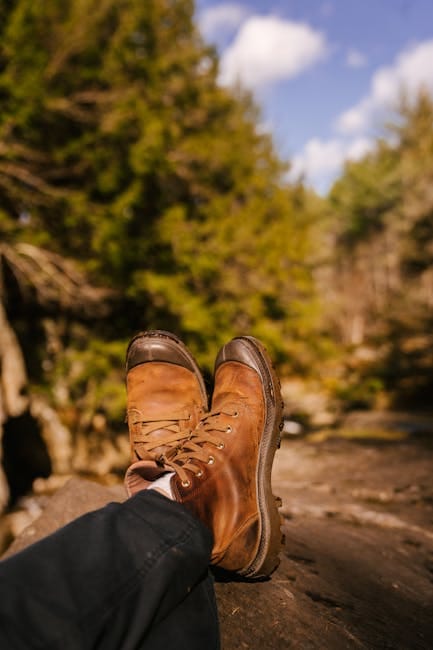How to Choose the Right Shoes for Mountaineering: A Complete Guide
Mountaineering is an exhilarating sport that combines physical endurance, mental toughness, and the beauty of nature. However, to ensure a safe and successful climb, having the right gear is crucial. Among the essential equipment, choosing the right pair of mountaineering shoes can make a significant difference in your performance and safety. In this comprehensive guide, we’ll explore essential factors to consider when selecting the perfect shoes for your mountaineering adventure.
Understanding the Importance of Proper Mountaineering Shoes
Mountaineering shoes are designed to provide support, protection, and comfort in harsh and demanding environments. Unlike regular hiking shoes, these specialized shoes are equipped to handle rocky terrains, ice, snow, and extreme weather conditions. According to a study by the American Alpine Club, improper footwear is a leading cause of injuries during climbs, highlighting the importance of selecting the right shoes.
The Risks of Inadequate Footwear
Wearing the wrong shoes can lead to a range of problems, including blisters, frostbite, and even severe injuries such as sprains or fractures. In addition, poor traction can increase the risk of slips and falls, which can be life-threatening in high-altitude conditions.
Key Features to Look for in Mountaineering Shoes
When choosing mountaineering shoes, it’s essential to focus on specific features that cater to your climbing needs. Here are some crucial elements to consider:
1. Insulation and Warmth
At high altitudes, temperatures can drop significantly, and having shoes with adequate insulation is vital. Look for shoes with thermal liners or built-in insulation to keep your feet warm in freezing conditions. Brands like La Sportiva and Scarpa offer models with advanced insulation technologies.
2. Waterproofing and Breathability
Weather conditions in the mountains can be unpredictable, so having shoes that are both waterproof and breathable is essential. Gore-Tex is a popular material used in many mountaineering shoes, offering excellent protection against moisture while allowing your feet to breathe.
3. Fit and Comfort
An ill-fitting shoe can lead to discomfort and blisters. Ensure your shoes provide a snug fit without being too tight. Consider trying on shoes at the end of the day when your feet are slightly swollen to get a more accurate fit. Remember, comfort should never be compromised.
4. Traction and Sole Design
Traction is key to navigating slippery and uneven terrains. Look for shoes with Vibram soles or similar technology, which offer superior grip and durability. The sole should also be rigid enough to provide stability on rocky surfaces but flexible enough for comfortable walking.
5. Weight
The weight of your shoes can affect your performance. While heavier shoes provide more support and protection, they can also be cumbersome. Find a balance between weight and functionality based on the difficulty of the climb and your personal preference.
Types of Mountaineering Shoes
Mountaineering shoes come in various types, each designed for specific conditions and climbing styles. Understanding these types will help you make an informed decision:
1. Double Boots
Double boots consist of an inner insulating boot and an outer shell, providing excellent warmth and protection. They are ideal for extreme cold and high-altitude climbs, such as those found in the Himalayas.
2. Single Boots
Single boots are lighter and more flexible, suitable for lower-altitude climbs and warmer conditions. They are a great choice for summer expeditions and less technical terrains.
3. Alpine Climbing Shoes
These shoes are designed for technical climbing involving rock, ice, and mixed terrains. They offer a balance of support, flexibility, and precision, making them versatile for various mountaineering challenges.
How to Test and Choose the Best Fit
Once you’ve narrowed down your options, it’s time to test the shoes. Here’s how to ensure the best fit:
1. Try Them On with Proper Socks
Wear the same socks you plan to use during your climb when trying on shoes. This will give you a more accurate feel and fit.
2. Walk and Climb In-Store
Most outdoor stores have simulated terrains for you to test the shoes. Walk, climb, and see how the shoes perform in different scenarios.
3. Check for Pressure Points
Ensure there are no pressure points or areas where the shoe rubs uncomfortably against your foot. These can lead to blisters and discomfort during long climbs.
Top Brands to Consider
Several brands are renowned for producing high-quality mountaineering shoes. Here are a few to consider:
1. La Sportiva
Known for innovative designs and durable materials, La Sportiva offers a wide range of mountaineering shoes suitable for various conditions and terrains.
2. Scarpa
Scarpa is a trusted name in the mountaineering community, known for its comfortable and reliable shoes that cater to both beginners and seasoned climbers.
3. Salewa
Salewa combines tradition with innovation, producing shoes that provide excellent performance and protection in challenging conditions.
Conclusion: Making the Right Choice
Choosing the right shoes for mountaineering is a critical decision that can greatly impact your climbing experience. By considering factors like insulation, waterproofing, fit, traction, and weight, you can find a pair of shoes that will keep you safe and comfortable during your adventure. Remember, investing in quality footwear is investing in your safety and success on the mountain. Always prioritize functionality and comfort over aesthetics, and you’ll be well on your way to conquering new heights.
Before embarking on your next mountaineering expedition, take the time to research and try various options. With the right pair of shoes, you’ll be prepared to tackle any challenge the mountains throw your way. Happy climbing!

